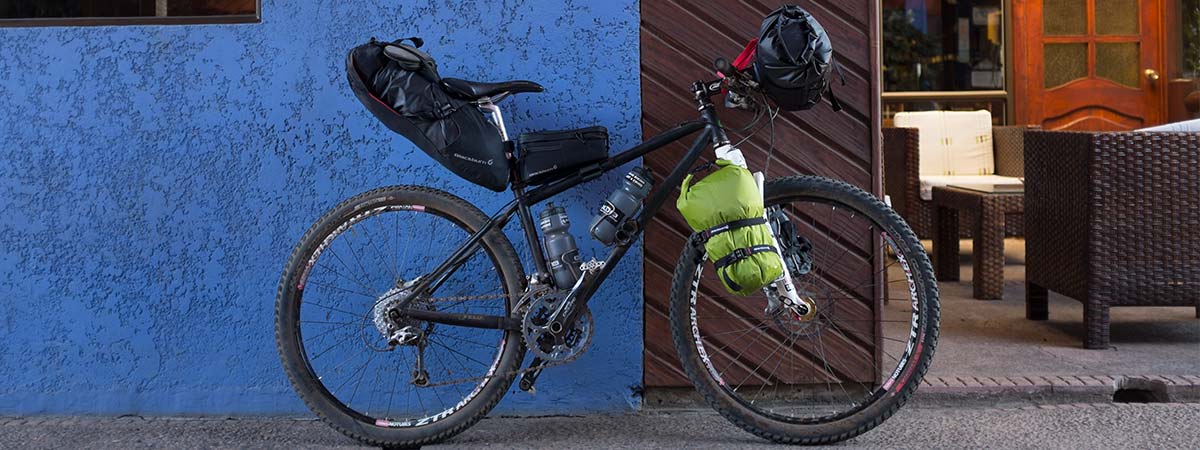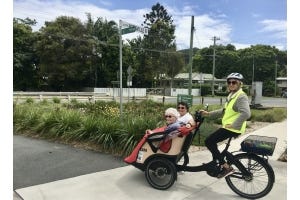The Best Bikepacking Gear Guide For Beginners

Bikepacking blends all the benefits of minimalist camping and mountain biking to give you a sense of freedom and adventure. You simply take your bike, add all of the gear you might need to camp and set off exploring, it's that simple.
For the best Bikepacking experience it is essential that you get the right kit, whether you’re on a budget or after the latest and greatest gear. You can still enjoy the joys of bikepacking Australia or the world. You can bikepack anyway you like with any kit. Start by looking at gear reviews and guides like this, then you're on your way. There is no right or wrong way to bikepack, but here we can point you in the right direction so that you can get the best Bikepacking setup with essential bikepacking gear.
Bikes

When it comes to Bikepacking bikes almost any type of bike will work, with just a few small adjustments to your current bike you can be set up for your next Bikepacking adventure. Hardtail mountain bikes are generally considered the best for Bikepacking as their off-road capable rigid frame can support heavy loads, while their tough and grippy tyres can help you tackle any terrain. Hardtail mountain bikes are extremely versatile and come at an affordable price which is great for bikepacking.
They usually come with disc brakes which offer excellent braking control and power in any weather, especially if you’re carrying a heavy load. While mountain bikes are preferred for the likely off-road adventures, you could try and work with a road bike or cyclocross bike depending on your adventure. Put simply, you want a bike that will make your life easier, giving you a comfortable ride and minimal maintenance while you’re traveling long distances across varying terrain.
Shop All BikesBags

Bikepacking bags are an essential part of any bikepacking kit, and the combinations are endless. Build your setup to suit your situation, with saddle bags, frame bags, handlebar bags, top tube bags, backpacks, hydration packs and pannier bags. Bikepackers often carry the same gear as backpackers plus some tools and spare parts. Only you have the benefit of carrying it on your bike, as you don’t want to carry large loads on your back for days at a time while you ride.
Instead, you should load your bike up evenly with your kit for a balanced ride and make sure it is as low as possible for improved handling, comfort and enjoyment. Bike bags really are amazing as they substantially increase how much you and your bike can carry. They also fit your bike with ease and don’t rattle when you’re hitting off-road trails, allowing you to enjoy the peaceful quiet of the great outdoors. The key is to minimise how many items you’re taking so that you can enjoy your bike riding.
Shop Bags & BackpacksBikepacking Essentials
When it comes to the essentials of bikepacking, it really does depend on what journey you're after. Is it multi-day bike touring or just a single day bikepacking trip? To start with, just think of the basics you need for everyday life no matter where you are. Food, water, shelter and clothing are a good place to start.
Food is fuel when you're bikepacking so if there is one thing you should pack more than you need, it's food. Pack long-lasting energy and space efficient food that will power your rides, such as energy bars, gels, dried fruit and nuts, granola, canned meats, vegetables or stews.
Shelter is critical to an enjoyable multi-day bikepacking trip. Start with a reliable and waterproof sleeping bag and pillow or sleeping pad, then build out your sleeping kit from there. You can use a tent or hammock for shelter. But, if you want to sleep under the stars you're all set to go with just your sleeping bag.
Water can be carried in several different ways while you're bikepacking. The most simple and convenient way to carry water is by adding some lightweight bottle cages to your bike and putting your water bottles there to take the weight off your body. The other option is a hydration pack, giving you access to water at any time, but also costs a little more and adds weight to your body rather than the bike.
Clothing will help keep you warm, cool, dry and most importantly comfortable if you get it right for your ride. You want reliable, moisture-wicking and versatile clothing which you can easily add or take away layers from depending on the weather. The list of clothing options is seemingly endless, including arm and leg warmers, base layers, gloves, jackets, vests, cycling jerseys, knicks, shorts, socks, shoes, headwear and sunglasses. How you setup is really dependent on you and your environment.
Bikepacking Accessories

When it comes to accessories there is no end to what you can take on your bikepacking adventure, but in our experience these accessories are really helpful.
Navigation is an essential part of bikepacking, whether you want to use a GPS Bike Computer or physical maps, it's important to have a rough plan or a route map so that you don't end up lost and far away from home.
Lights are essential on any bike, but when you're bikepacking it's important to note that it's probably more about seeing than being seen. So a powerful light that can double as a flashlight when removed is always handy.
Repair kits are important, but it can get difficult when deciding what to bring. Start with a flat kit, inflation, multi-tool and add a chain tool and extra chain links if you have space. While you're at it, add a repair kit for yourself, you never know when you'll need a medical kit on your bike ride.
Lastly, never, ever forget the toilet paper.
 Your store
Your store 



